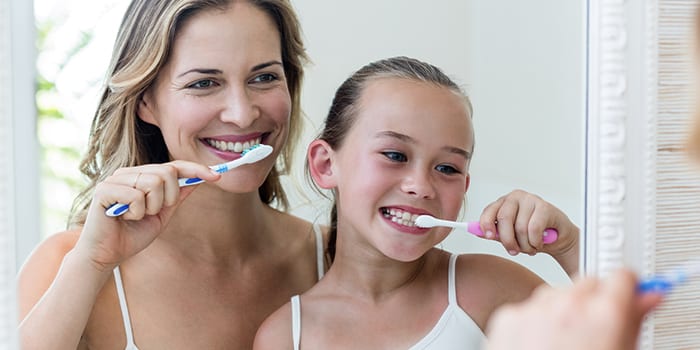December 19, 2018
To maintain optimal oral health, it is important to brush your teeth twice daily. By removing plaque from teeth, regular brushing can prevent gum disease and tooth decay. But which type of toothbrush does a better job of removing plaque and keeping your teeth clean?
To help determine if an electric toothbrush is right for you, we have compared the most important factors when it comes to buying a toothbrush.
Effectiveness
In a 2004 study published in the Journal of Dentistry, electric toothbrushes were found to be more effective than manual toothbrushes (3). However, this was only the case for electric toothbrushes with an automatic alternating or rotating action.
When comparing electric toothbrushes with a standard, non-rotating head, there was no significant difference in effectiveness (2).
Further, for individuals who brush too hard, an electric toothbrush can help facilitate softer brushing (2). Soft brushing keeps the tooths’ enamel intact, which protects teeth from outside forces.
To summarise, patients looking to remove more plaque and protect their teeth against gum disease, a rotating electric toothbrush is the best solution.
Cost
An electric toothbrush costs far more than a manual toothbrush. For an electric toothbrush you are looking at an initial cost of $20 to $270, depending on the type of model. As well, refill packs will cost around $15 each time you need a new head for your toothbrush.
On the other hand, manual toothbrushes are very affordable, costing anywhere from $1 to $5.
If budget is a concerning factor, a manual toothbrush is going to be your cheapest option.
Convenience
Manual toothbrushes are readily available in grocery stores, most petrol stations and convenience stores. This makes them easy to purchase and highly accessible.
On the other hand, electric toothbrushes are harder to come by and some models are only available online. As well, it can be difficult finding the accompanying refills for your electric toothbrush.
In terms of convenience, manual toothbrushes are easier to find and can easily be replaced.

Usability
Electric toothbrush models need to be charged frequently to be effective. Manual toothbrushes, however, do not have such requirements. Further, travelling can be a hassle with electric models as they are bulky and take up more room.
Alternatively, individuals tend to be more focused while brushing with an electric toothbrush and find the process more interesting (1).
Some electric models have built in timers which help individuals stick to the recommended two-minute brushing time. This ensures that you clean your teeth properly.
As well, individuals with limited movement or orthodontic appliances may find an electric toothbrush easier to use.
Electric toothbrush for kids
For children who have a handle on their tooth brushing routine, an electric toothbrush may be a good option.
Some electric toothbrushes have connecting apps that help aid the tooth brushing process. For example, an electric toothbrush with an inbuilt sensor can detect where exactly your child brushes their teeth. This enables you and your child to see the areas that may need improvement.
Moreover, music, inbuilt timers and reward programs help to keep your little ones interested in their tooth brushing routines.

Summary
As long as you are using the proper brushing technique, floss daily and you visit the dentist every 6 months for your routine check-up and clean, you are on a good way to maintaining proper oral health.
No matter which toothbrush you use, both are effective in removing plaque. Although there are pros and cons of electric vs manual toothbrushes, it comes down to individual preference.
Due to the automatic nature of an electric toothbrush, it makes brushing easier which results in greater plaque removal.
If you are still unsure of the right toothbrush for you, your dentist will be able to help you decide on the best option for your case.
References
- Hovliaras C, e. (2018). Dental hygienists’ evaluation of the usability research study of the Colgate ProClinical A1500 electric toothbrush. – PubMed – NCBI. [online] Ncbi.nlm.nih.gov. Available at: https://www.ncbi.nlm.nih.gov/pubmed/26054186 [Accessed 18 Dec. 2018].
- Wiegand, A., Burkhard, J., Eggmann, F. and Attin, T. (2012). Brushing force of manual and sonic toothbrushes affects dental hard tissue abrasion. Clinical Oral Investigations, 17(3), pp.815-822.
- Yaacob, M., Worthington, H., Deacon, S., Deery, C., Walmsley, A., Robinson, P. and Glenny, A. (2014). Powered versus manual toothbrushing for oral health. Cochrane Database of Systematic Reviews.

